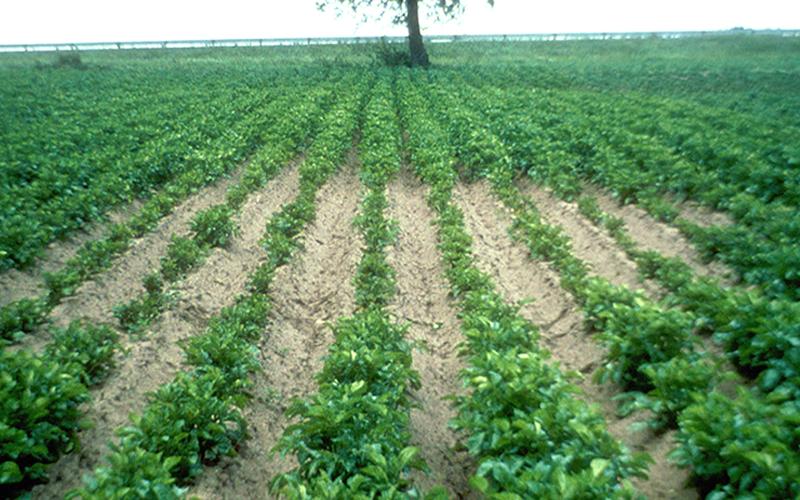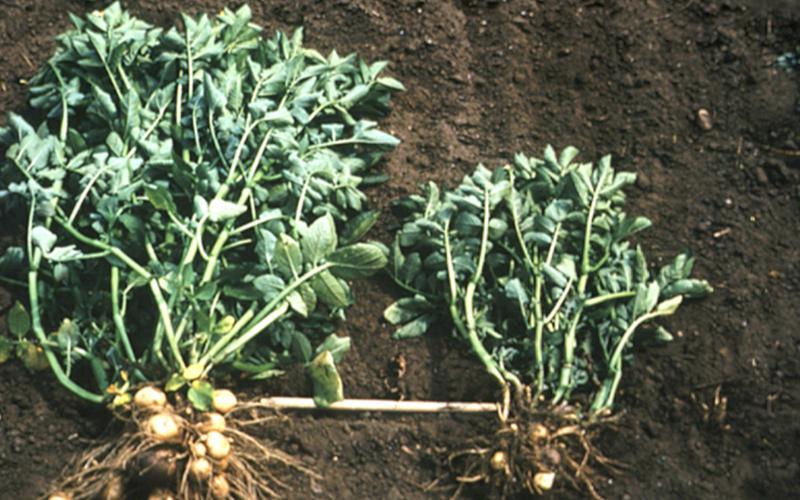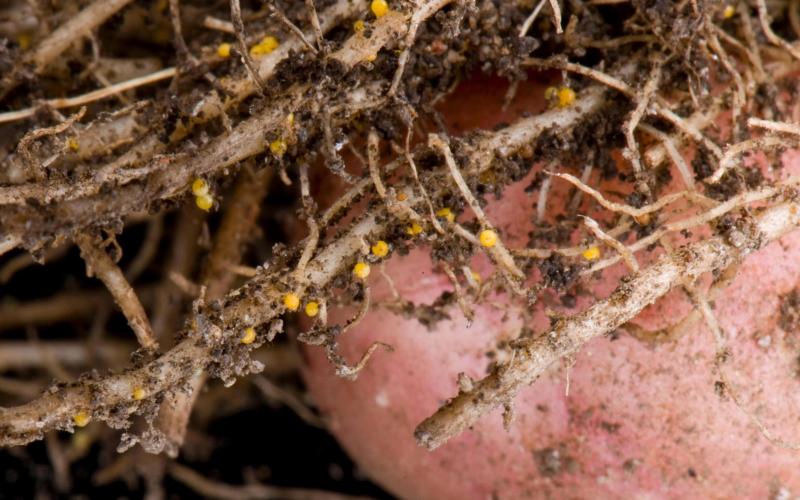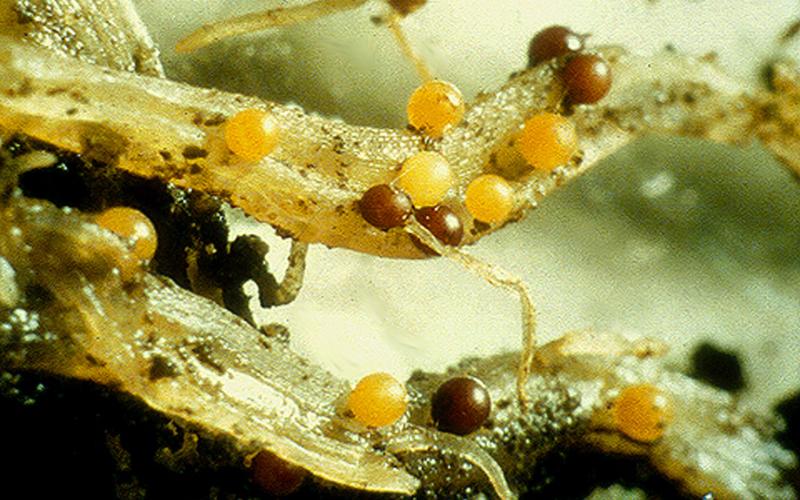Scientific name: Globodera rostochiensis (golden nematode) and Globodera pallida (pale cyst nematode)
Native range: Andes Mountains of South America
At Risk
High populations of potato cyst nematode (PCN) can reduce potato yields up to 80 percent. In the absence of host plants, the cysts remain dormant but alive in the soil for 20 years or more. Cysts are spread by soil on seed tubers, farm machinery, and roots or bulbs of other plants grown in infested fields. Cysts are also moved by wind and flood water. Fields of all types of potatoes (those for processing, those for baking whole, etc.) can have significant yield losses, but the risk of spreading PCN to new fields is greatest for potatoes sold for seed. Seed potatoes from PCN-infested fields may not be sold to Canada, and where present, trade with other countries is seriously impacted as well.
Distribution
The pale cyst nematode is known to occur in Newfoundland, Canada and Idaho. In Canada, the golden nematode is known to occur in Newfoundland, Vancouver Island, Quebec and Alberta. In the United States, strict quarantine measures have kept the golden nematode confined to nine counties in New York since 1941.
Neither species of PCN has ever been detected in Minnesota.
Biology
Potato cyst nematodes are soil-dwelling, worm-like organisms, less than 1mm in length. These nematodes feed on the roots of potatoes, tomatoes, eggplant, and other plants in the Solanaceae family. As the female feeds she swells and erupts through to the outside of the root. If fertilized by a male, she will produce up to 500 eggs, then she dies and her exterior body wall hardens into a cyst to protect the eggs.
Regulatory Status: Regulated
Potato cyst nematodes are regulated by the United States Department of Agriculture (USDA) to prevent their spread from currently infested areas in Idaho and New York. There are currently no regulations in Minnesota because they have not been found in the state. However, negative survey results are generally required for export of seed potatoes from Minnesota. If PCN were found in Minnesota, state and federal regulations to restrict movement and control or eradicate would likely be implemented.
What Can Be Done?
The MDA has been conducting surveys for PCN since 2006. The survey involves collecting, drying and analyzing soil samples from numerous locations throughout fields. For growers who plan to export seed potatoes to Canada, survey is essential. The MDA conducts cyst nematode surveys in the fall, contact the MDA via Report a Pest for more information.
Smarty Plants Podcast
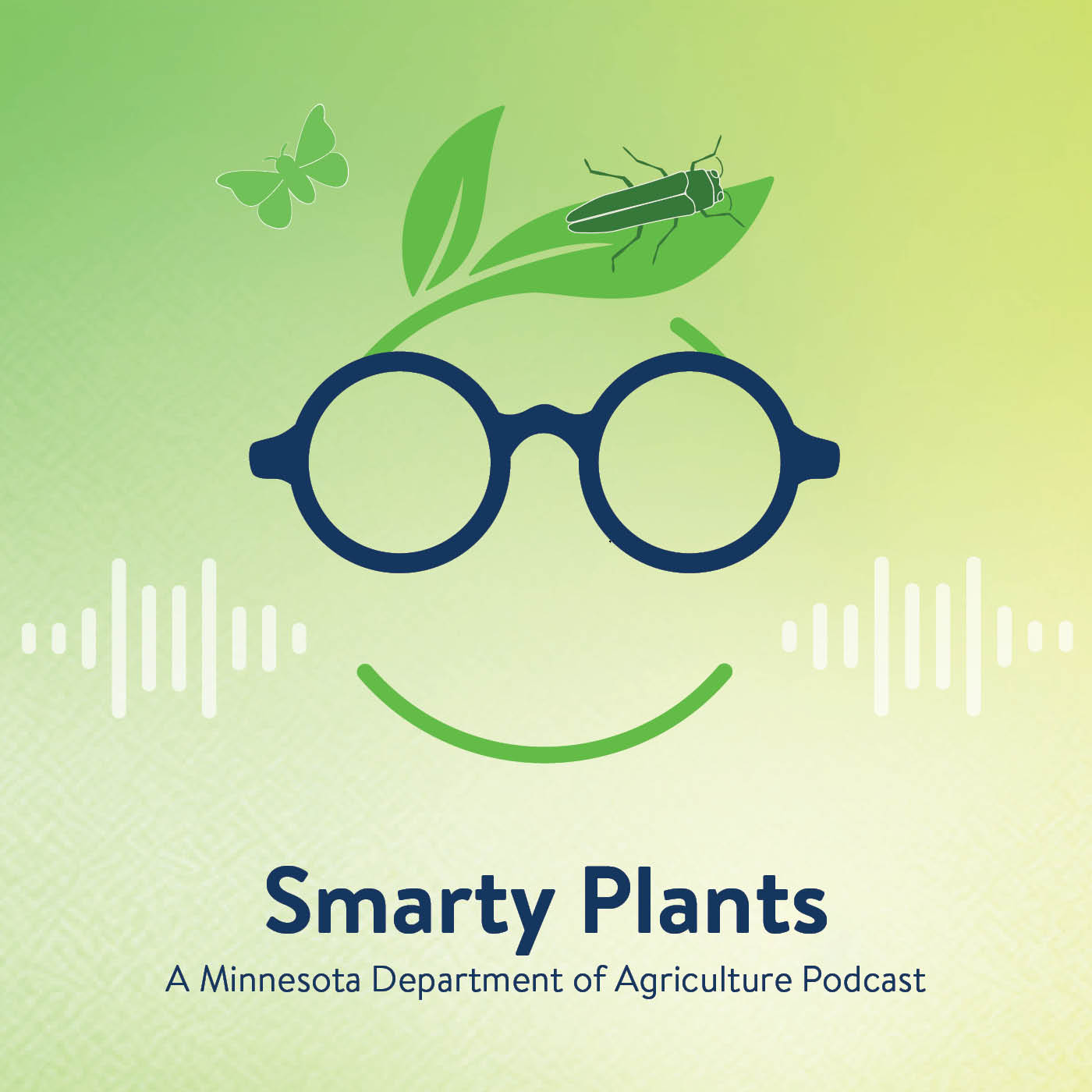
Discover Smarty Plants, the Minnesota Department of Agriculture's podcast that digs into the fascinating world of invasive species. Join expert guests as they share insights and solutions to protect our environment and agricultural resources. Visit Smarty Plants and start listening today.
